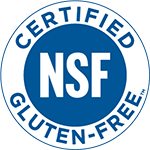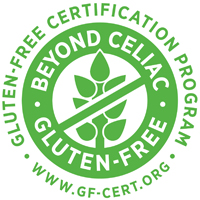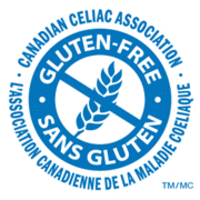Food Safety Tips: Canada Gluten Awareness and Labeling
- celiacbythebay
- Aug 16, 2024
- 4 min read
Updated: Mar 13
Note: Our posts may contain affiliate links. For example, as an Amazon Associate we earn from qualifying purchases. If you purchase something through those links, you won't be charged extra, but we'll receive a small commission. All opinions expressed herein are our own, and we will only recommend products, services, and restaurants that we have personally tested and found to meet our quality standards.
Canada has so much to offer as a vacation destination, even if you have celiac disease. You just need to know the right things to look out for! Here are some important gluten safety tips for your trip to Canada:
Grocery Shopping Tips: Food Labeling
Depending on the province, in Canada you’ll often find foods labeled in both French and English. So in addition to keeping an eye out for “Gluten-Free” on packaging, you alternatively may see “Sans Gluten.”
In terms of ingredient lists, Canada does not require the use of the catch-all term “gluten,” just each individual ingredient, so you need to know all of the sources of gluten, i.e. barley, rye, wheat, etc. But unlike the U.S., Canada does require that any potential gluten sources be clearly labeled (including oats!), either within the ingredient list itself (separately or in parentheses for compound ingredients or to list gluten sources ingredients were derived from) or within a "Contains" statement. And if there is a contains statement, you can trust that the "Contains" statement will list all allergens (if said allergen is categorized as such in Canada) within the product. Whereas some countries allow the allergens to be listed in any mix of the individual ingredients list and/or the contains list, Canada’s labeling laws remove this confusion and take an all or nothing approach to the use of “Contains” statements.
For “May Contain” statements, Celiac Canada recommends that unless the product says “gluten-free” elsewhere on the packaging (and thus meets the 20 ppm requirement), celiacs should not consume any products that list a gluten-containing ingredient in the “May Contain” statement. Furthermore, those with allergies to wheat or another gluten grain should avoid any products that list their allergen in the “May Contain” statement, even if they are labeled gluten-free.
When it comes to oats/oat milk, view them similarly to the U.S. in terms of potential gluten cross-contact. As noted by Celiac Canada, “If the ingredient list just says oats, assume they are contaminated with gluten, unless they are specifically identified as pure uncontaminated oats or by the source (Cream Hill Estates Oats, Only Oats, etc.).”
Here’s a handy label reading cheat sheet from Celiac Canada, which also includes a list of high-risk ingredients to avoid for gluten cross-contamination reasons (unless said ingredients have a gluten-free claim on the labeling, which then makes them safe). You can also familiarize yourself with their various gluten-free certification symbols at the link (also in the header image of this blog), though as long as you’re fine with the traditional 20 ppm limits, these certifications are less necessary than their U.S. counterparts are to assure celiac safety.
Lindt Lindor Milk Chocolate Truffle Sample
In each country's Food Safety Tips guide, we include a LINDOR truffle test to illustrate how allergen labeling differs country to country (you can read more about this test and compare additional countries here; we've also included some great gluten-free truffle replacements there). Below is an example of Canadian Lindt LINDOR milk chocolate truffles:

On the label above, you'll see "barley malt extract" listed in parentheses as a sub-ingredient of “sugars,” meaning this chocolate is not gluten-free. There is no separate “Contains” statement on this packaging, so barley and other allergens like milk are not called out separately from the full ingredients list. Notice also that there is no bolding of allergens and no use of the term “gluten” on the packaging.
Restaurant Safety Tips: Advocating For Your Needs
We’ve found Canada to be relatively similar to the U.S. in terms of knowledge of gluten and cross-contact precautions — that is to say, your mileage will vary greatly from person to person. Do not automatically expect the average grocery or restaurant employee to be aware of celiac-safe food prep and handling, or what gluten is.
We highly recommend thoroughly researching each restaurant’s celiac awareness and cross-contact prevention precautions before eating anywhere. This includes pre-visit research through this website and/or an app like Find Me Gluten Free (get $5 off FMGF Premium here), asking the right questions of servers, and considering using an allergy card like those from EqualEats (get 10% off with coupon code CELIACBYTHEBAY) to ensure you’re safe.
If at any time within these steps you don’t trust that a restaurant has the knowledge to keep you safe, don’t be afraid to leave and find somewhere else to eat. Trust your (sensitive) gut — better to be safe than risk ruining your trip and health!










Comments